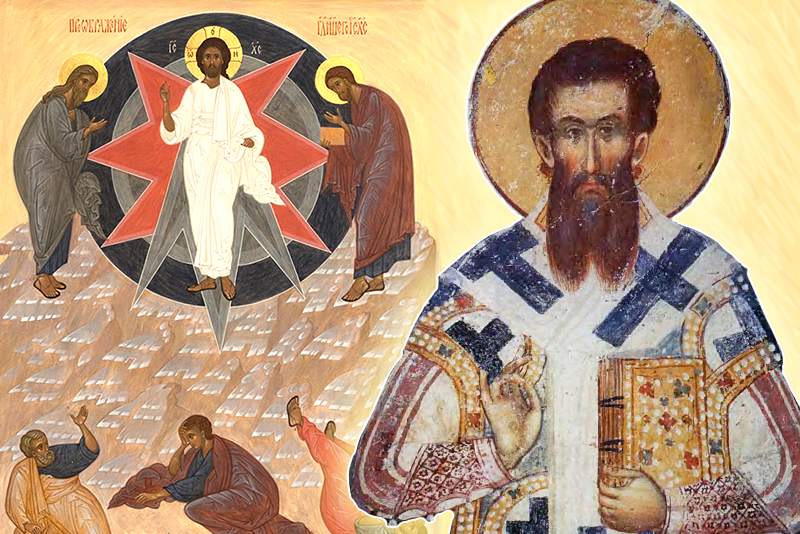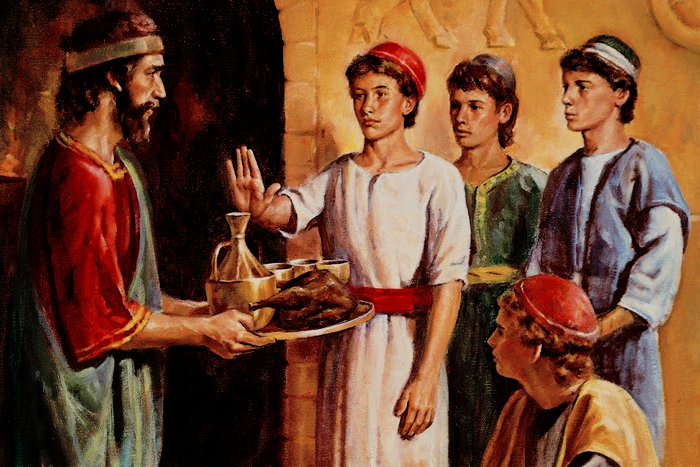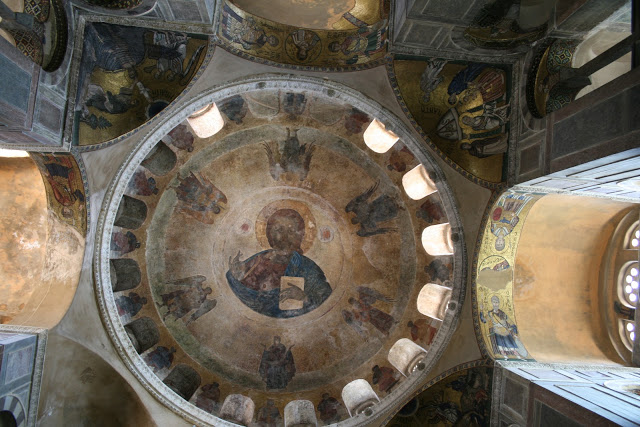
The doctrine of the divine energies began to be developed by the fathers of the first centuries, but it was given its final shape by St Gregory Palamas. This teaching helps us to get closer to understanding a number of imortant questions: how does God work in the world? Is He cognizable in His Essence? How can a person adhere to Him? The presentation of the doctrine by St Gregory and his followers is complicated, but we will try to explain it in simple words.
The Essence of the Doctrine
It is impossible to understand the Essence of God. God Himself reveals certain aspects of His Essence to people. For example, Christians are aware of the three persons of God, but no one can say that he knows the essence of the Trinity. This means that even the revelations of God about His Essence do not make us capable of understanding it in any way. This means that this side of the Deity is closed to man, either forever or at least for now.
However, the invisible God, unknowable in Essence, acts visibly in the world. These actions are called divine energies, they also constitute God’s grace. The divine energies permeate the entire universe. Through these energies, any person can directly commune with God and partially cognize Him. How exactly is this possible?
Communion with God
Divine energies are omnipresent, which means that divine grace acts in any place and in any circumstances: “The wind blows where it chooses” (John 3:8). Why then do we not see God’s grace and why do we not always feel it?
The Lord does not reveal His every action to everyone. Indeed, in some cases, the Power of God was manifested visibly to every person. There are many such examples in Scripture, for example, the giving of the manna from heaven (see Exodus 16), the fall of the walls of Jericho (see Joshua 6), the resurrection of the dead and the earthquake after the Crucifixion (see Matt. 27).
There are however also many examples of the opposite, when God revealed His actions only to specific people, including cases when a miracle happened in the middle of a crowd, but only a few saw it. For example, only Protomartyr Stephen saw “the heavens opened and the Son of Man standing at the right hand of God” (Acts 7:56). The Lord chose only a few people as his prophets. Only a few apostles were honored to see the Light of Tabor during the Transfiguration of the Lord (see Mk. 9).
In a number of his works, St Gregory Palamas teaches that even today one can see the divine energies in the world. Yes, the time will come when the Lord will visibly reveal himself to all. But only a few ascetics are rewarded with being able to see His Grace incessantly. The grace of God appears to them visibly in the form of light. This uncreated light of God is the same light that the apostles saw on Mount Tabor. One who sees this light joins God directly, that is, he is in the highest degree of holiness, known as theosis.
Knowing God by His Energies
What does the knowledge of God by his energies mean? St Gregory of Nyssa explains it in the following way: “The Deity is completely incomprehensible, incomparable to anything and known by mere activity. It is clear that the mind cannot penetrate into the essence of God, but on the other hand, it comprehends the activity of God, on whose basis it receives a sufficient knowledge of God, in coherence with its limited capabilities. By God’s activity in the world, we know about the power and wisdom of God, His goodness and justice, His infinity and many other properties that our mind grasps when searching for traces of the Divine in the phenomena of nature and life.” (Contra Eunomium)
This means that, without understanding the essence of God, one can understand through His energies that He is immutable, eternal, omnipresent, unoriginate, wise, omniscient, omnipotent, holy, true and loving. This understanding is simultaneously the absolute maximum and the necessary minimum of man’s understanding of God.
The main Provisions of the Teaching by St Gregory Palamas
Among the holy fathers before St Gregory Palamas, the doctrine of the divine energies was not formalized, and some related questions remained unresolved. The main provisions formulated by St Gregory can be reduced to seven points:
- The essence of God and the divine energies have a “God-worthy distinction”. The essence of God exists by itself, but not His energies.
- The energy of God is not created by Him, but it is His eternal part.
- The distinction between the essence and the energies does not introduce ditheism.
- Energy is inseparable from essence. Energy may actually be called God.
- Essence is higher than energy because the latter comes from essence.
- Participation in divine energies is participation in God.
- God is called Light not by Essence, but by Energy
Is it Necessary to Profess the Doctrine of Divine Energies?
Strictly speaking, the doctrine of divine energies is not a dogma, because the Councils of Constantinople that approved it were not ecumenical, but local. The 1351 Council of Constantinople is sometimes informally called the Eighth Ecumenical Council, in view of the fact that its resolutions were unanimously adopted and recognized in all the Local Churches. Its decisions were included in the solemn confession of faith, read every year on the first Sunday of Great Lent. Therefore, the doctrine of the divine energies cannot be regarded as an authoritative theologumenon , but only as an inalienable and immutable truth of faith.
Thus, the doctrine of divine energies asserts that every person has access to the knowledge of God and direct communication with Him. A person striving for God and doing everything in his power for God, can become deified and a partaker of the Divine nature. Visions of divine energies mean that God Himself reveals to man His actions in the world. The final result of theosis was expressed by St Athanasius of Alexandria: “God became man so that man might become god.”





The Nicene Creed of 325 A.D. dogmatically teaches that the Son of God is ‘only begotten out of the essence of the Father Light out of Light, co-essential with the Father’. Nearly all of the major Church fathers prior to the Pseudo Dionysius (Palamas’ mentor) taught that the Son of God is Hypostatic Light – viz., that the Divine Light at the level of Godhead is synonymous with the essence of God itself. The Eastern fathers also generally taught that God interacts with creation with respect to His energies, but these were not conceived of as eternal uncreated energies, but rather as specific exertions of the Deity in creation. ‘Dionysius’ borrowed from Neoplatonic emanationism and speculated that the divine processions of the pagan philosophers were God’s manner of interacting and revealing Himself to creation – but in the Neoplatonic systems from which He borrowed, they were actually the pagan dieties – which ‘Dionysius’ re-introduced into Christianity by granting to his ‘processions’ an ontological reality. Palamas then combined these various strands of Eastern thought and reified them into a doctrine of divine energies. At any rate, since the Ecumenical Nicene Creed identified the Divine Light of Godhead itself with God’s essence itself, Palamas’ teaching and that of the Synodikon of Orthodoxy denying that the Divine Light is synonymous with the essence of God and is in fact merely divine energy infinitely transcended by the invisible essence of God itself is in fact heretical, and contrary to the teaching of the fathers, and yet they pronounced anathema on those who held fast to the Nicene faith. One need not adopt the theology of the Scholastic philosophers to oppose the teaching of Palamas, but merely seek to uphold the Nicene definition of faith. Which is my standpoint.